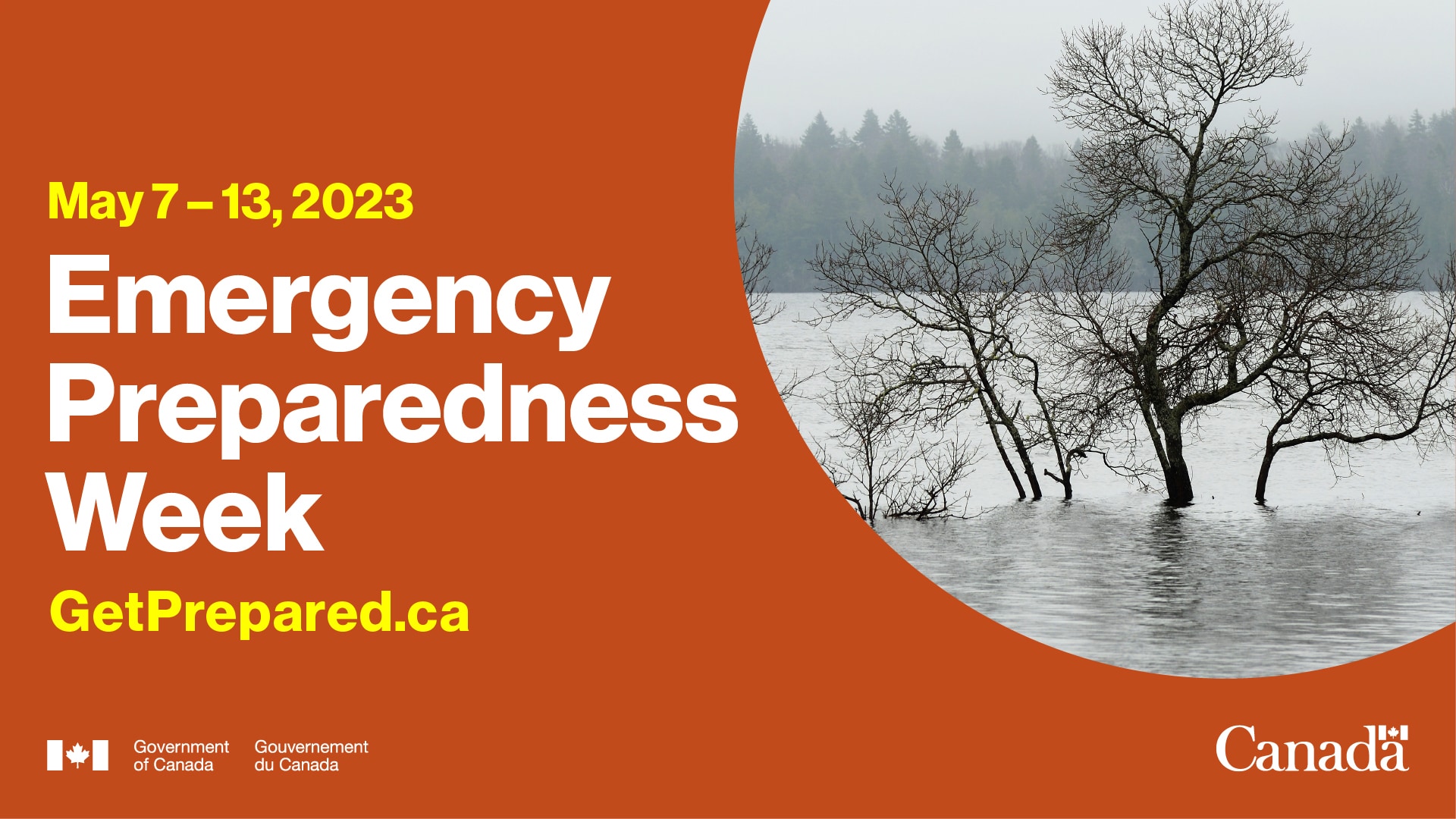Emergency Preparedness Week: Essential Tips to Keep Your Family Safe
Written by: Michelle Meerse Categories: Home Insurance
It’s Emergency Preparedness Week, and if you’re anything like me, sometimes a little refresher is in order. The theme: be prepared, know your risks. In the face of unexpected emergencies, being prepared can make all the difference. Join me as we explore key strategies to safeguard your family’s well-being during Emergency Preparedness Week.
To ensure that you and your family are prepared, there’s no time like the present to create an emergency kit
Emergency Preparation
Place the following items in an area of your home to be ready for an emergency that prevents you from leaving your home. A basic home emergency supply kit could include the following items:
- First aid kit
- Four litres of water per person per day for at least three days, for drinking and sanitation
- Food—at least a three-day supply of non-perishable food
- Can opener, plastic cups, and eating utensils
- Flashlight and extra batteries
- Battery-powered or hand crank radio and a Weatheradio receiver with tone alert, and extra batteries for both
- Change of clothing and personal identification cards for each family member
- Personal hygiene items and hand sanitizer
- Moist towelettes, garbage bags, and plastic ties for personal sanitation
- Medications that are needed regularly
- Whistle to signal for help
- Dust mask to help filter contaminated air, and plastic sheeting and duct tape for sheltering in place
- Wrench or pliers to turn off utilities
Water
Water is an absolutely necessary item in an emergency supply kit and emergency preparation. Following a disaster, clean drinking water may not be available. Your regular water source could be cut off or compromised through contamination. Prepare yourself by building a supply of water that will meet your family’s needs during an emergency.
How Much Water Do I Need?
You should store at least four litres of water per person per day. A normally active person needs at least four litres of water daily just for drinking; however, individual needs vary, depending on age, physical condition, activity, diet, and climate.
To determine your water needs, take the following into account:
- Children, nursing mothers, and sick people may need more water.
- A medical emergency might require additional water.
- During warm weather, more water may be necessary. In very hot temperatures, water needs can double.
- Rule of thumb: Keep at least a three-day supply of water per person.
How Should I Store Water?
For emergency preparation, It is recommended that you purchase commercially bottled water to prepare the safest and most reliable emergency water supply. Keep bottled water in its original container and do not open it until you need to use it. Observe the expiration or “use by” date. Keep the water stored in a cool, dark place.
Preparing Your Own Containers of Water
It is recommended you purchase food-grade water storage containers from surplus or camping supplies stores to use for water storage.
Before filling with water, thoroughly clean the containers with dishwashing soap and water and rinse completely so there is no residual soap.
If you choose to use your own storage containers, choose two-litre plastic soft drink bottles—not plastic jugs or cardboard containers that have milk or fruit juice in them. Milk protein and fruit sugars cannot be adequately removed from these containers and provide an environment for bacterial growth when water is stored in them. Cardboard containers also leak easily and are not designed for long-term storage of liquids. Also, do not use glass containers because they are heavy and breakable.
Storing Water in Plastic Pop Bottles: Follow these steps
- Thoroughly clean the bottles with dishwashing soap and water, and rinse completely to remove any residual soap.
- Sanitize the bottles by adding a solution of 1 teaspoon of non-scented liquid household chlorine bleach to a quart of water. Mix the sanitizing solution in the bottle, ensuring it touches all surfaces. After sanitizing the bottle, thoroughly rinse out the sanitizing solution with clean water.
- Fill the bottle to the top with regular tap water. If the tap water has been commercially treated by a water utility with chlorine, you do not need to add anything else to keep the water clean. However, if the water you are using comes from a well or untreated water source, add two drops of non-scented liquid household chlorine bleach to the water. Let the water stand for 30 minutes before using. You should notice a slight chlorine odour in the water; if not, add another dose of bleach and allow the water to stand for an additional 15 minutes.
- Tightly close the container using the original cap. Be careful not to contaminate the cap by touching the inside with your finger. Place a date on the outside of the container to keep track of when it was filled. Store the container in a cool, dark place.
Water can also be treated with water purification tablets that can be purchased at most sporting goods stores.
Water that has not been commercially bottled should be replaced every six months.
Maintaining Your Emergency Preparation Kit
Just as important as assembling your supplies is maintaining them to ensure they are safe to use when needed. Here are some tips to help you keep your supplies ready and in good condition:
- Keep canned food in a cool, dry place.
- Store boxed food in tightly closed plastic or metal containers to protect it from pests and extend its shelf life.
- Discard any canned items that become swollen, dented, or corroded.
- Use foods before they expire and replace them with fresh supplies.
- Place new items at the back of the storage area and keep older ones in the front.
- Rotate your stored food and water supplies every six months. Remember to label all containers with the date you stored them.
- Reassess your needs annually and update your kit accordingly as your family’s needs change.
- Keep items in airtight plastic bags and pack your entire disaster supply kit into one or two easy-to-carry containers, such as an unused trash can, camping backpack, or duffel bag.
With these kits in place, you and your family can focus on remaining safe during a disaster and keeping each other calm. Consider preparing these kits together as a family so kids understand the importance of being prepared.
Living in the lower mainland poses a series of risks – including flooding, wildfires, earthquakes and severe weather, it’s important to stay on top of your safety needs and be well prepared.
For more ideas on preparing your entire family for an emergency, check out our Resource Section or visit The Government of Canada’s Get Prepared Webpage.





